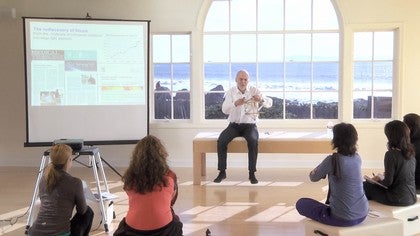Premium workshop
You can view a 2 minute preview. For details, scroll down below the video.
This workshop can only be accessed with a coupon (no purchase available).Description
How to use this book
This book includes access to the following online resources that enhance the printed material.
- Browse through the chapters to see what captures your attention. Your curiosity will guide you.
- Read systematically from beginning to end. Practice the exercises in the recommended order.
- Select the chapter most relevant to your personal concerns. Incorporate some of the exercises into your movement practice.
- Select the chapter most relevant to your professional practice, the one that addresses your client(s) concerns. Incorporate some of the exercises into your client programs
- Practice the Pilates Anytime classes listed as chapter references in order to gain additional movement experience.
- Make copies of the Fascia-focused Pilates Planning Guides. Complete the Client Profile and Exercise Selection forms for yourself or each of your clients.
Use this book as an in-depth reference, studying the references, further reading and resources for enhanced understanding
The final two chapters were kindly licensed by Dr. Jean-Claude Guimberteau. You can learn more about his work by going directly to his website.
About This Video
Workshops: Anatomy and Fascia
Comments
You need to be a subscriber to post a comment.
Please Log In or Create an Account to start your free trial.





















